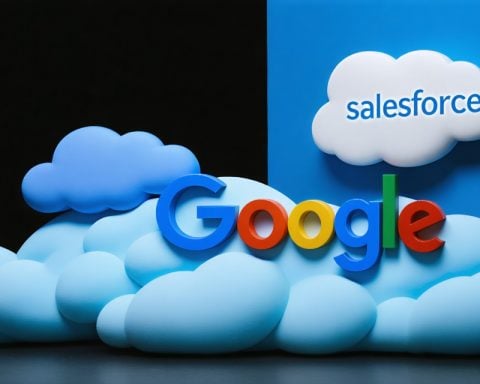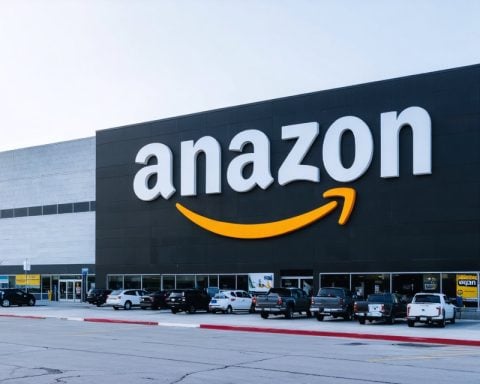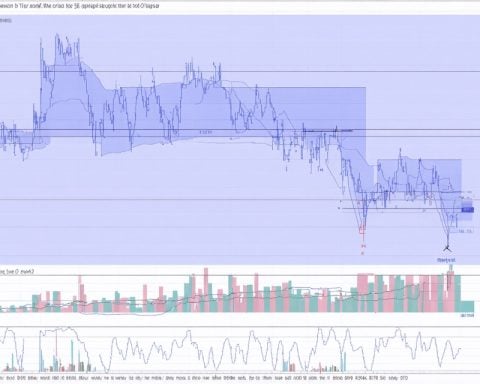Resilience in Retail Amid Economic Challenges
Despite facing challenges such as inflation and high-interest rates, the retail sector achieved impressive sales, reaching a total of $5.28 trillion in 2024. This marks a 3.6% increase from the previous year, as reported by the National Retail Federation (NRF). Notably, this figure does not account for inflation, which stood at 2.9% at year’s end.
Jack Kleinhenz, NRF’s chief economist, emphasized that the U.S. economy wrapped up 2024 with strong indicators, suggesting a promising outlook for 2025. Analysts from Colliers shared a mixed perspective on retail growth, highlighting a brighter forecast for the grocery sector, with 87.5% of grocery retailers feeling optimistic, compared to just 35.7% of mass retailers like Walmart and Target.
Concerns linger over potential tariffs affecting trade relationships, particularly with China and Mexico. The CFO of Walmart assured stakeholders that they would navigate these challenges, citing that a significant share of their products is sourced locally.
On the technology front, retailers are not holding back, with nearly 88% planning investments in automation and over 71% focusing on artificial intelligence, underscoring their commitment to efficiency and enhanced customer experiences.
Yet, with rising prices impacting consumer sentiment, many shoppers are prioritizing essential purchases. As we approach 2025, both retailers and consumers will need to adapt to an evolving economic landscape.
Implications of Retail Resilience on Society and the Global Economy
The retail sector’s robust performance amid economic uncertainty reveals broader societal trends and has profound implications for the global economy. As consumers adapt to rising prices, their purchasing choices increasingly reflect a shift toward essential goods, solidifying the grocery sector’s resilience. This trend can influence a more health-conscious culture, as individuals invest more in groceries versus luxury items.
Furthermore, the reliance on automation and artificial intelligence indicates a significant evolution in job landscapes. While these technologies promise operational efficiency and enhanced customer service, they also raise concerns about potential job displacements. As retail giants automate processes, there will be necessary discussions about workforce retraining and the future of work in a rapidly changing environment.
In terms of global economics, the potential for tariffs and trade conflicts could reshape supply chains, with companies increasingly sourcing locally to mitigate risks tied to foreign relations. This shift might foster a resurgence of domestic manufacturing, bolstering local economies while simultaneously prompting debates on consumer prices and availability.
The long-term significance of these trends suggests that both consumer behavior and corporate strategies will continue to evolve. Retailers may face pressure to balance profitability with sustainable practices as environmental awareness grows, compelling them to adopt more ethical sourcing and production methods. Ultimately, the resilience displayed in retail is a microcosm of broader economic resilience, with intertwined implications for society’s purchasing habits, employment dynamics, and environmental stewardship.
Retail Resilience: Navigating Economic Headwinds for Growth
The Retail Sector’s Remarkable Performance
In 2024, the retail industry demonstrated remarkable resilience, achieving sales figures of $5.28 trillion, representing a 3.6% increase from the previous year, according to a comprehensive report from the National Retail Federation (NRF). Despite economic pressures such as inflation, which concluded at 2.9%, the sector has shown a robust ability to adapt and thrive.
Key Insights from Industry Leaders
Jack Kleinhenz, the NRF’s chief economist, highlights strong signals from the economy, painting an optimistic picture for retail in 2025. His insights reflect the sector’s adaptability amid shifting economic conditions, suggesting retail could continue its upward trajectory. This perspective is supported by analysts from Colliers who identify a marked differentiation in growth expectations among retail sectors.
Sector-Specific Growth Trends
Grocery Sector Optimism: A significant 87.5% of grocery retailers express confidence in their growth prospects. This contrasts sharply with only 35.7% of mass retailers (like Walmart and Target) sharing a similar level of optimism. Grocery retailers are benefiting from a consistent demand for essential goods, even as economic uncertainties persist.
Technology Investment as a Growth Strategy
Retailers are increasingly turning to technology as a key growth strategy. Nearly 88% of businesses plan to invest in automation, while 71% are focusing on integrating artificial intelligence into their operations. This commitment to technology aims to enhance operational efficiency and improve customer experiences, positioning retailers to better meet evolving consumer needs.
Consumer Behavior and Purchasing Trends
As inflation continues to impact consumer sentiment, many shoppers are gravitating toward essential purchases. This shift necessitates that retailers adapt their offerings and marketing strategies to capture the essential needs of consumers, prioritizing affordability without compromising on quality.
Challenges and Considerations Ahead
Despite the promising sales figures, challenges remain. Potential tariffs impacting trade—especially with China and Mexico—raise concerns about the supply chain. Retail giants like Walmart are reassuring stakeholders by highlighting their substantial investments in local sourcing, which may mitigate some of the risks associated with international trade fluctuations.
Looking Ahead: Predictions and Market Analysis
As we transition into 2025, it is crucial for both retailers and consumers to remain agile in an evolving economic landscape. Analysts predict that consumer preferences will continue to shift towards value-based purchasing, placing pressure on retailers to innovate and optimize pricing strategies.
Conclusion
The state of the retail sector in 2024 suggests a dynamic and resilient industry capable of navigating substantial economic challenges. As retailers embrace technology and focus on essential goods in response to consumer behaviors, the groundwork is being laid for sustained growth in the years to come. For further insights and trends in retail, visit the National Retail Federation at nrf.com.























